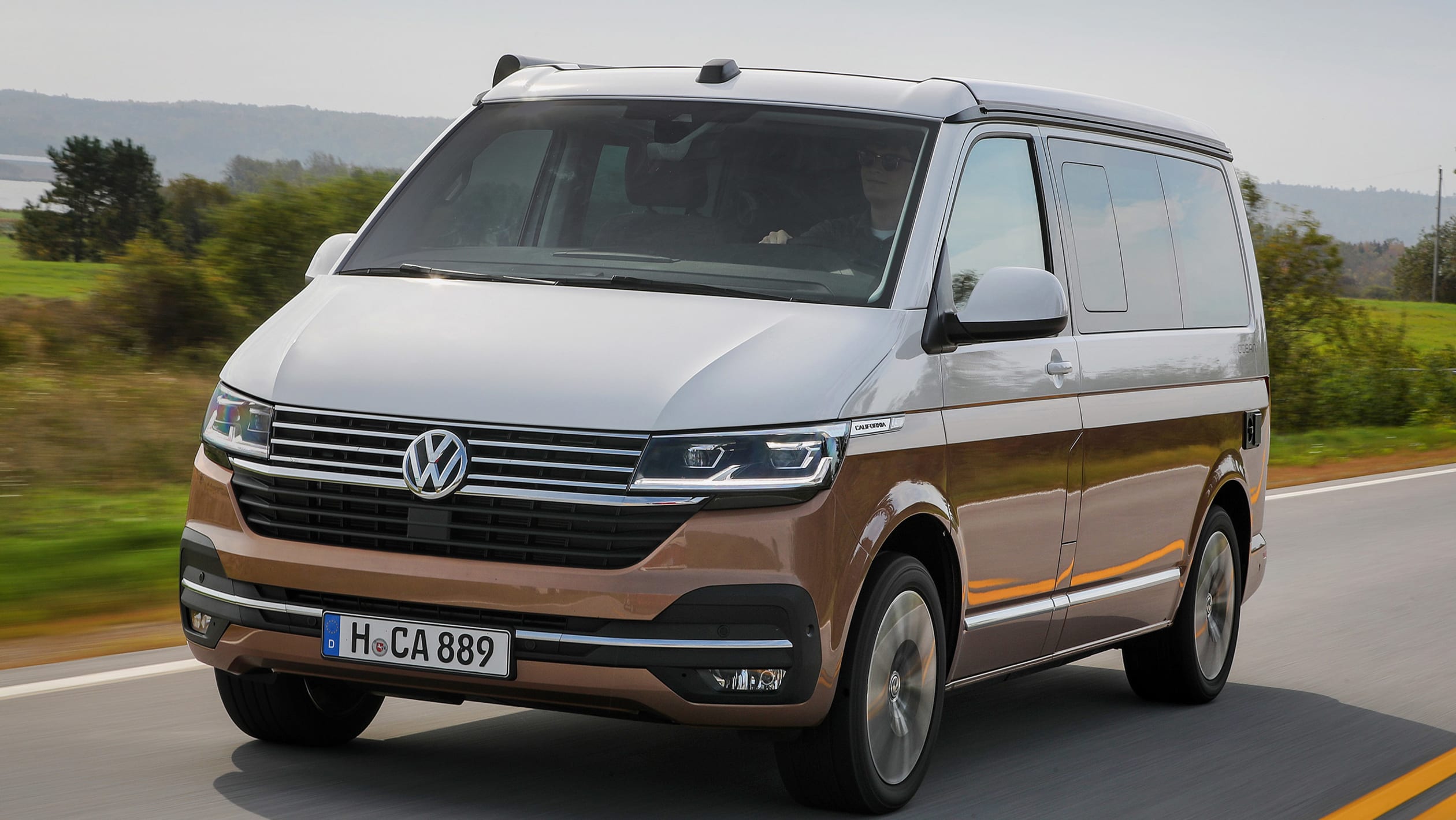The new VW California Beach has sold out before it even lands in Australia. That’s no surprise given just how good VW’s mid-size van’s 6.1 upgrade is.
The Volkswagen California is the quintessential compact camper. Many have come, others have gone, but the California, evolved from the fifties original, continues to win hearts across the globe.
Like the rest of VW’s T6.1 range – including the Transporter van and Caravelle luxury MPV – the California was recently treated to a mid-life nip and tuck, heralding a fresh look and ever more convenience features. Not due in Australia until 2021, we’ve been granted early access to the revised camper.

From the outside, the changes are mild. There are some new headlights and a slimmer grille at the front, some new wheel designs to the side, and fresh tail-lights at the rear. The white over bronze two-tone paint is new, too.
It’s inside where the biggest updates take place, taking the California – and the rest of VW’s mid-size van range – from commercial vehicle to luxury-laden load lugger. The dashboard is plastered with VW’s latest tech, featuring a brand-new, super sharp 9.2-inch touchscreen and a set of crisp, customisable digital dials.
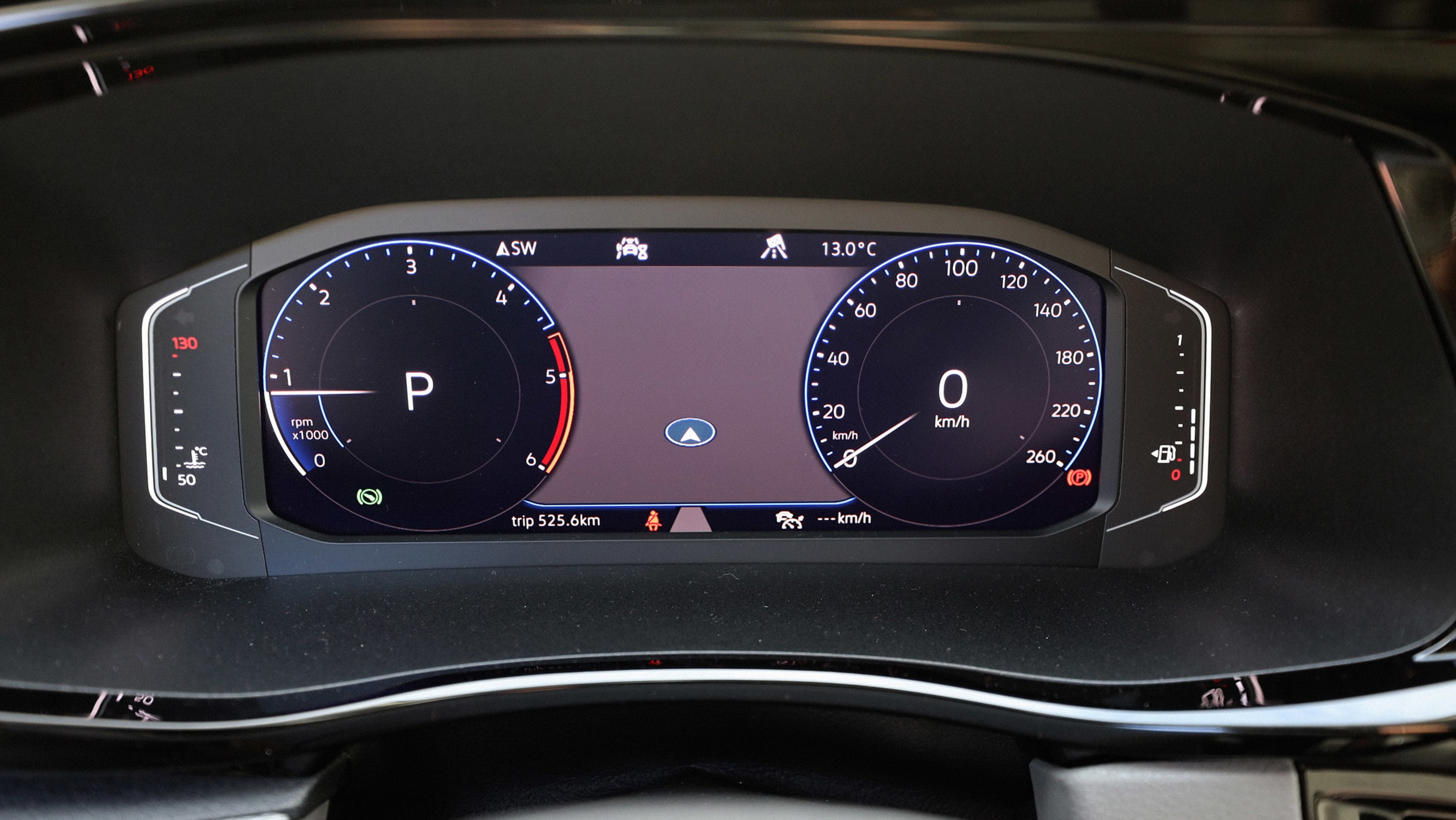
The pixelated control panel above the rear-view mirror has been replaced by another functional touchscreen, allowing users to open and close the roof and set the temperature for the auxiliary heating. It also features a new ‘inclinometer’, which ensures your camping pitch is completely level before bedding down for the night.
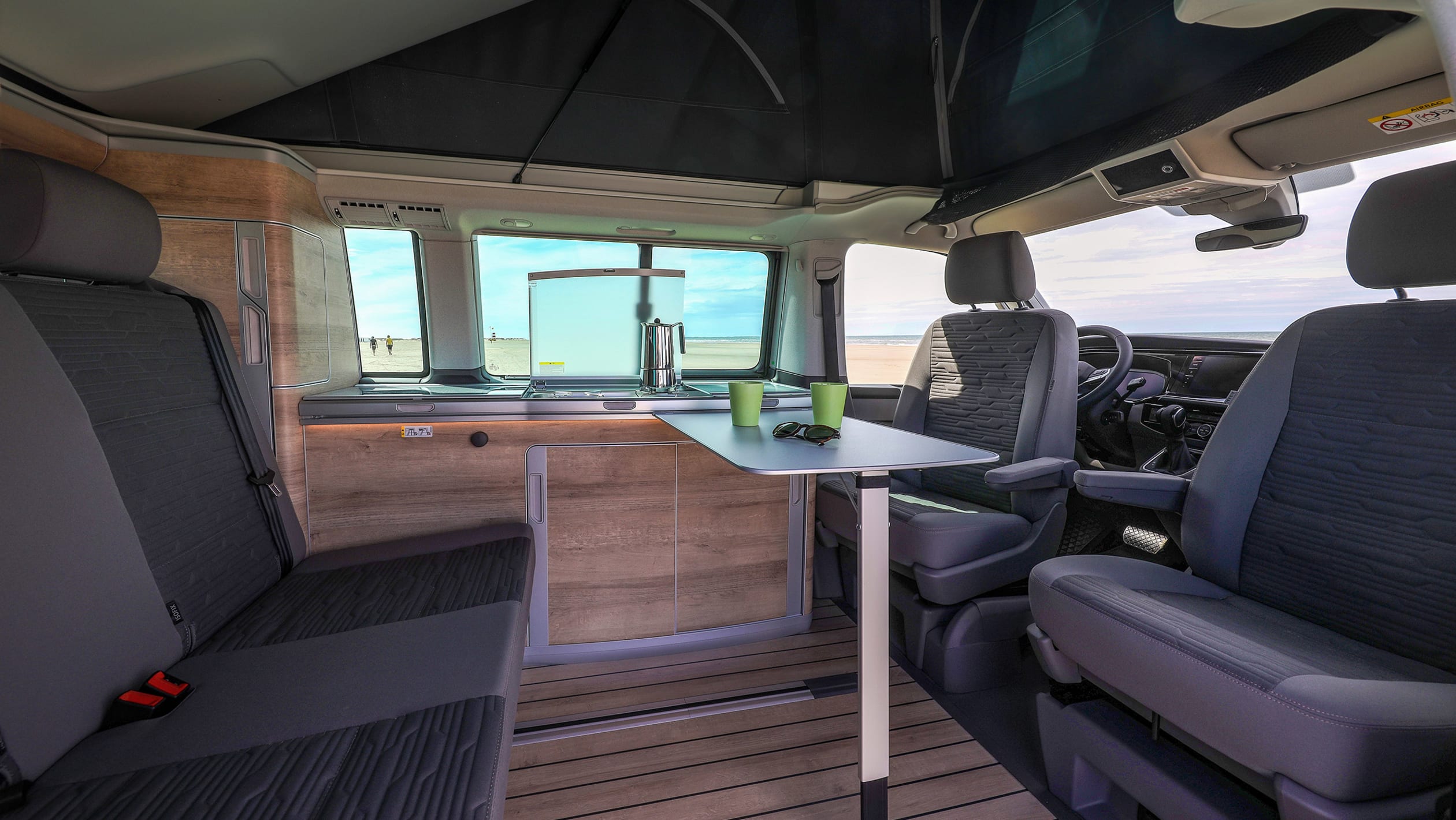
Elsewhere, there’s a new, more comfortable bed in the roof, revised catches for the cupboards, and new trim options – including a choice of wood floors. Every version features alloy wheels, automatic lights and wipers, all-round parking sensors, adaptive cruise, and the aforementioned auxiliary heater. The awning, which extends outwards from the right side of the van, is also standard.
All versions now use Volkswagen’s tried and tested seven-speed DSG gearbox – there is no manual option. Engines are a 110kW 2.0-litre TDI engine and a higher-power 146kW motor, as well as optional 4MOTION all-wheel drive. We tried the front-wheel drive model mated to the punchier engine, which demonstrated plenty of shove for what is ostensibly a 2.6-tonne van with windows.
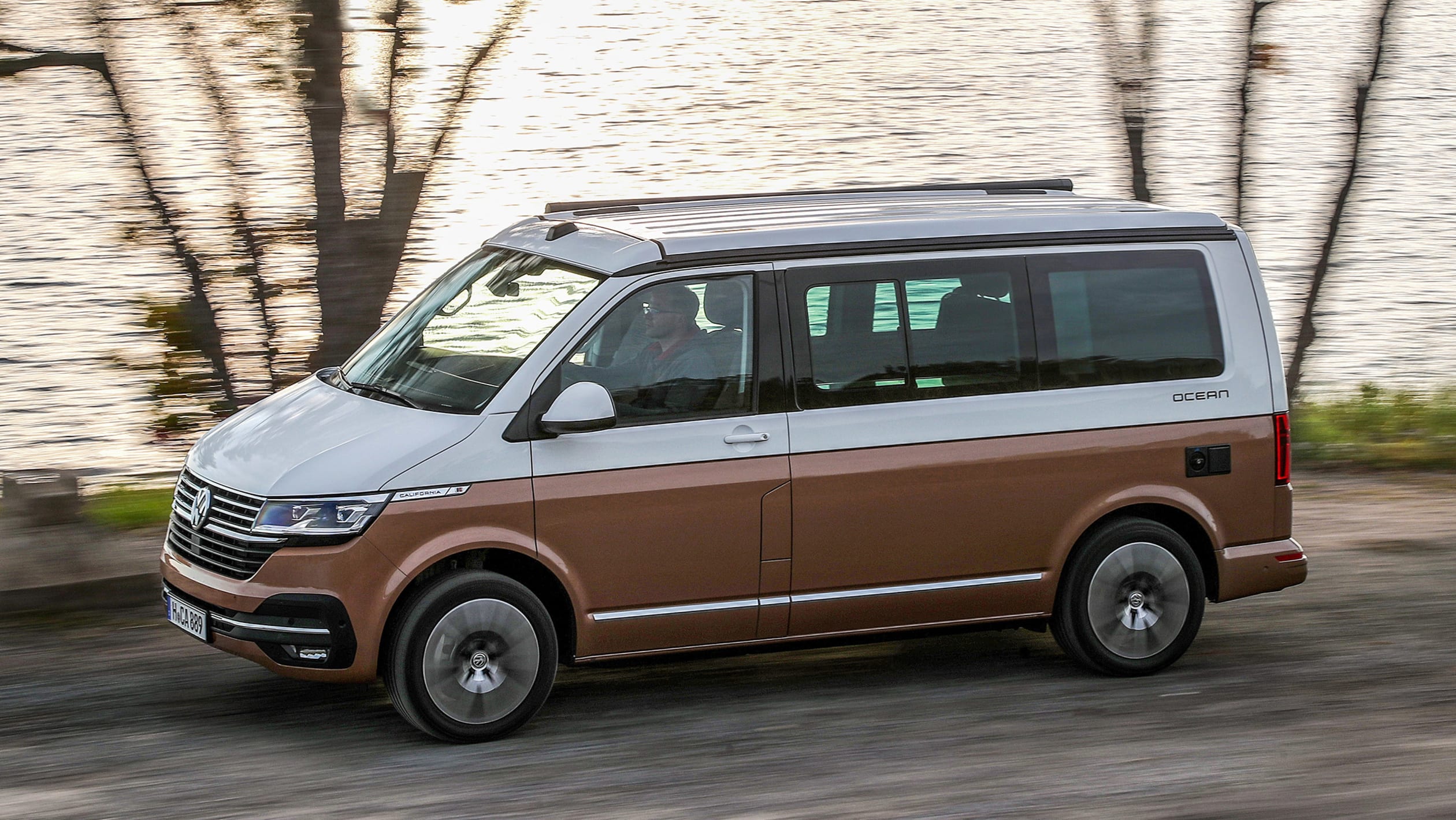
If you allow for the fact that the California is based on a commercial van, this camper gives a reasonable account of itself on a twisty road. The steering may feel rather vague and imprecise compared to that of a family car, but you quickly get used to the VW’s extra bulk and won’t find it intimidating to drive. It’s been tweaked slightly for the 6.1 version but feels very similar on the move, and the fear of upsetting the plates and pots in the cupboards is likely to ensure a more relaxed pace.
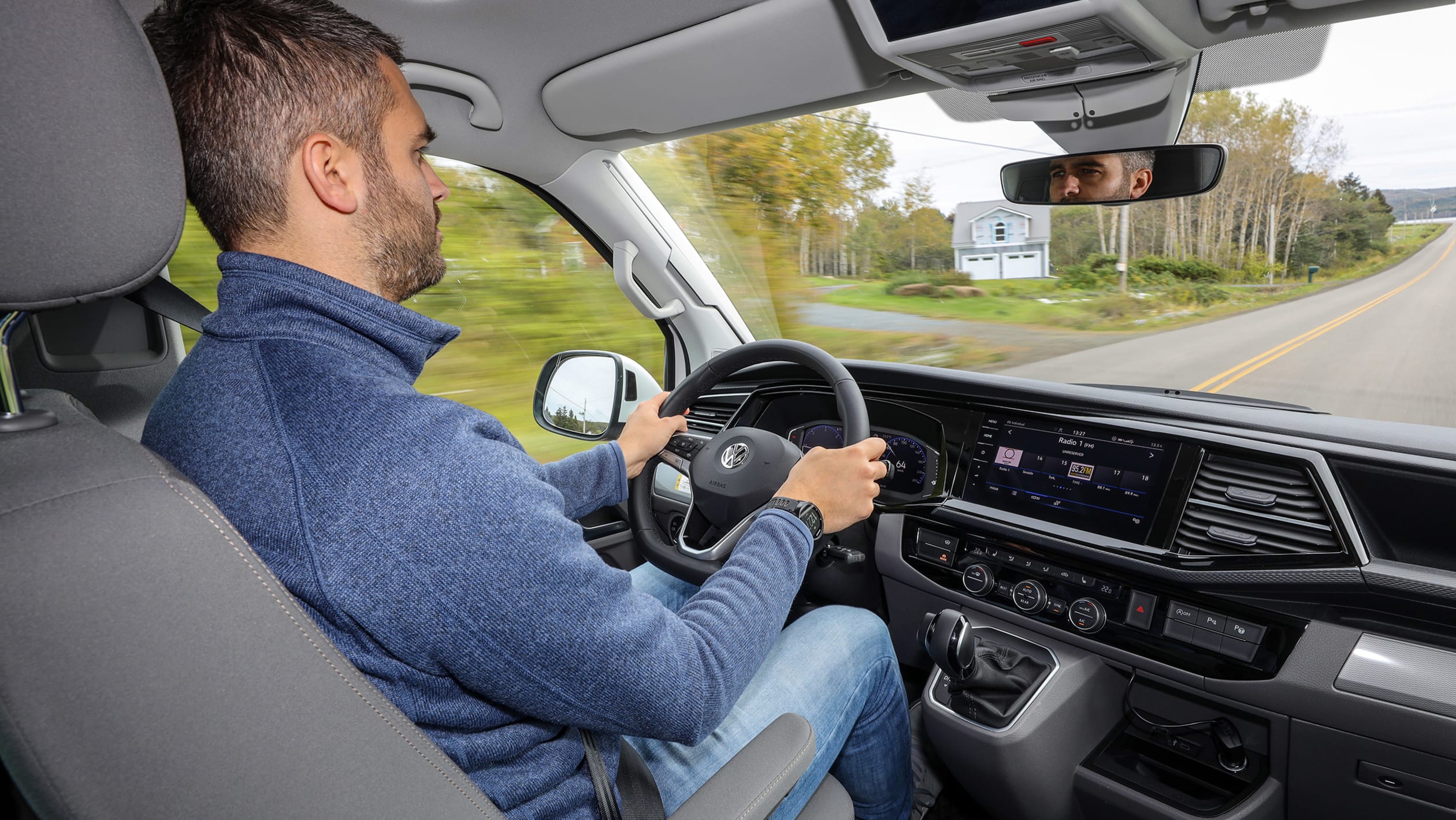
The gearbox appears smoother than before, and the engine is suitably refined. There’s a little wind whistle from around the door mirrors at higher speeds, but you’ll be amazed how quiet it is for such a large vehicle. VW claims to have tweaked the steering, but the changes feel minor and difficult to detect on the move. It still pays to take things gently if you don’t want your pots and pans rattling around in the rear.
But find yourself a secluded spot and no aftermarket camper conversion can compare with the latest California. It is a remarkably clever van, ingeniously engineered with myriad crafty features designed to make life on the road as painless as possible.
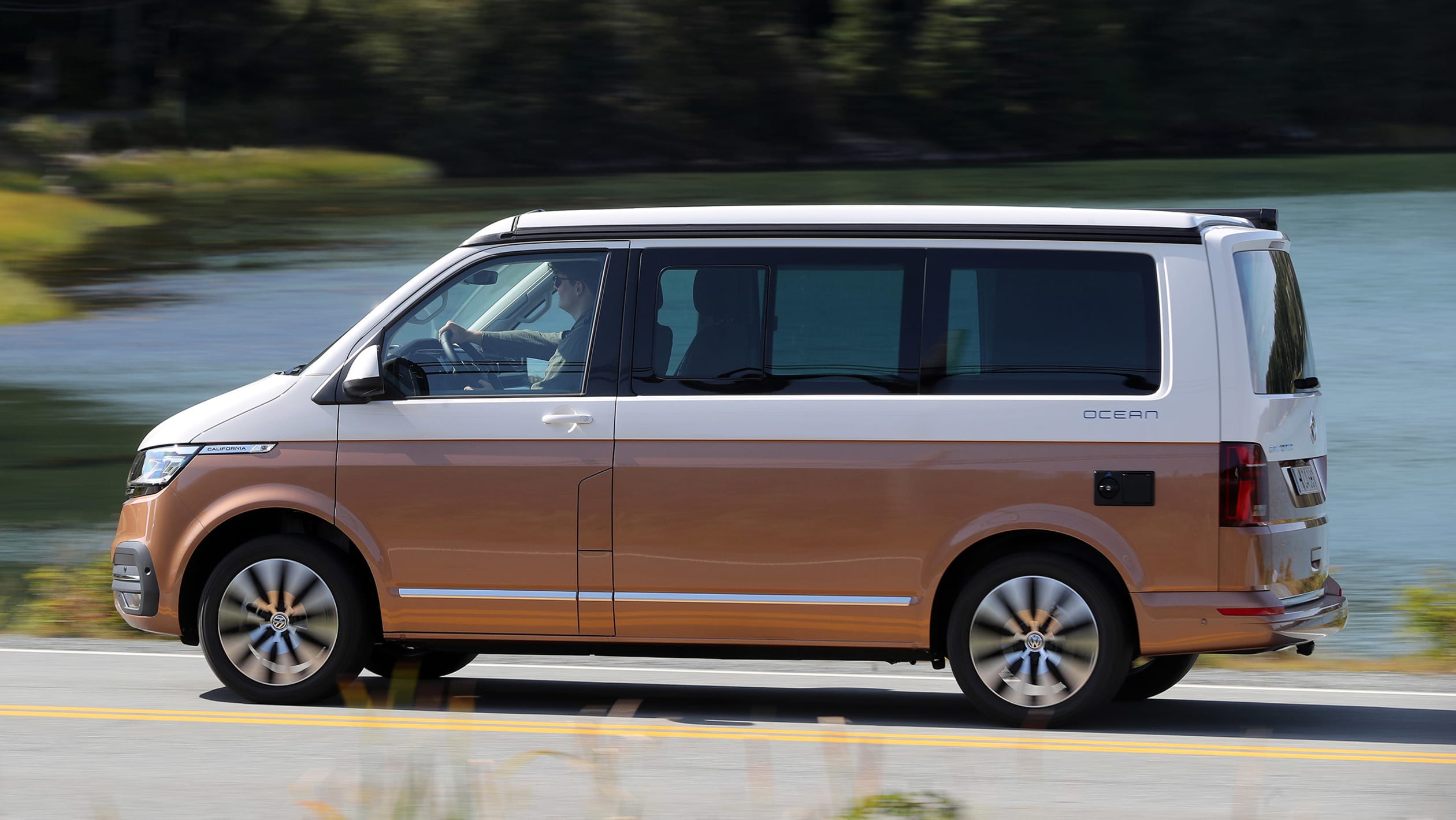
Van drivers are expected to spend several hours behind the wheel every day, and the VW Transporter – the basis of the California – was designed with that in mind. The dashboard is actually very car-like in terms of layout, and its commercial vehicle nature is only given away by the steep angle of the steering wheel. You’ll even find Volkswagen’s sophisticated Active Information dashboard digital display.
While it has expected family car must-have features, such as alloy wheels, air conditioning, central locking and DAB radio, it’s the camping equipment that really defines what the California is all about. And it’s easy to see where the extra cost of Volkswagen’s camper goes compared to the Transporter van or Caravelle People Carrier.
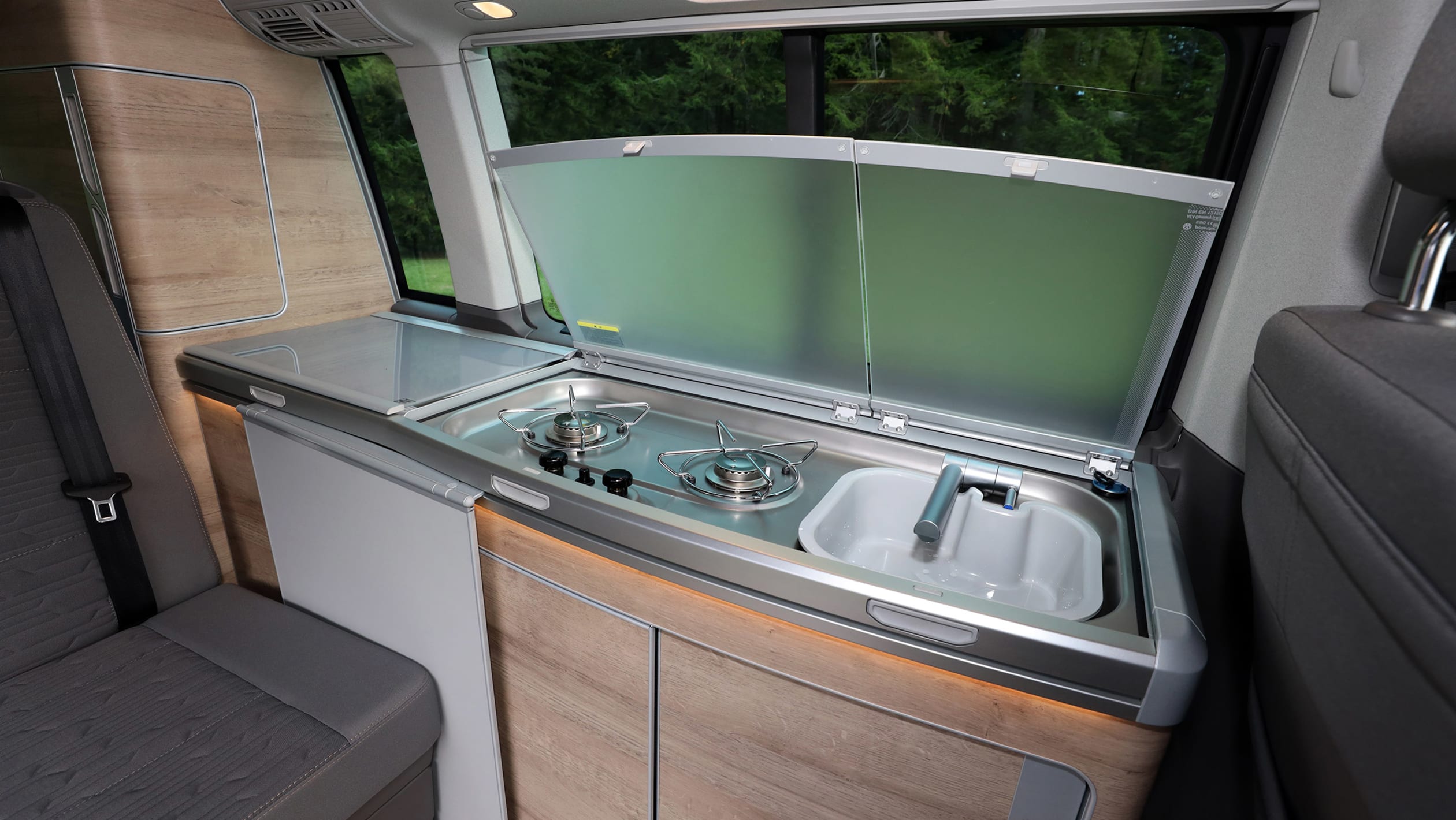
Space inside is generous with the pop-up roof raised, and you’ll never tire of the endless clips, covers and cupboards dotted around the cabin; there are clever additions like chairs hidden in the bootlid, fold-out table in the sliding door and a hanging rail in the cupboard. Unless you really need the added practicality of the Grand California’s toilet and built-in shower, the standard van will leave you wanting for very little indeed.
Once again, Volkswagen shows the rest of the industry – and the countless aftermarket converters – exactly how it’s done. The California is expertly engineered, with limitless clever tricks designed to make living on the road as easy and comfortable as possible. The tech upgrades only add to the van’s appeal.
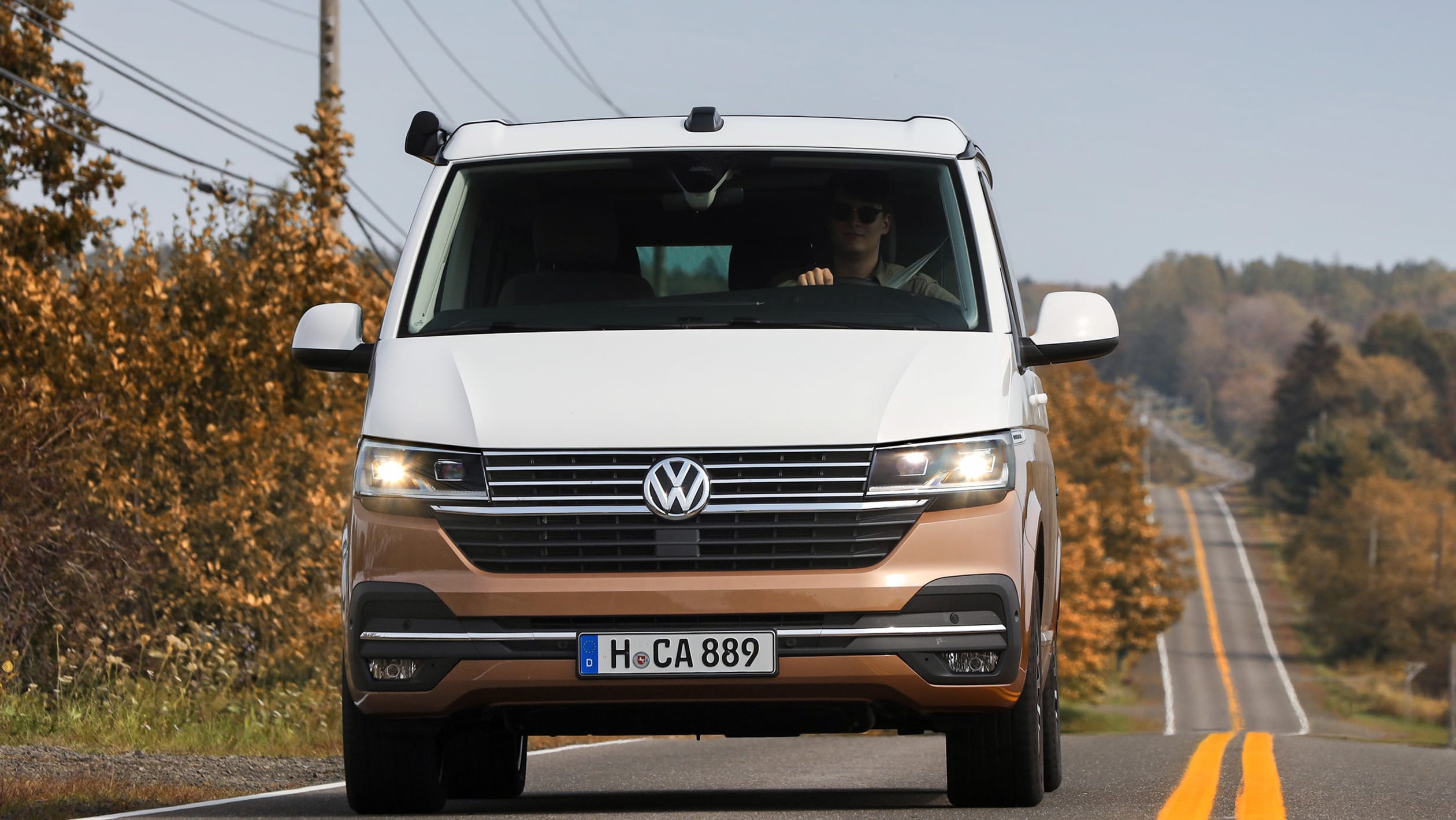
Richard Ingram




